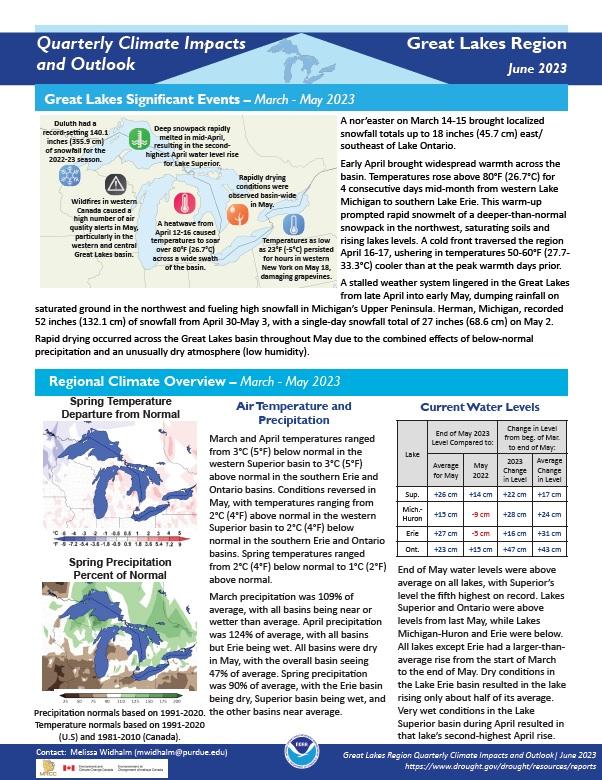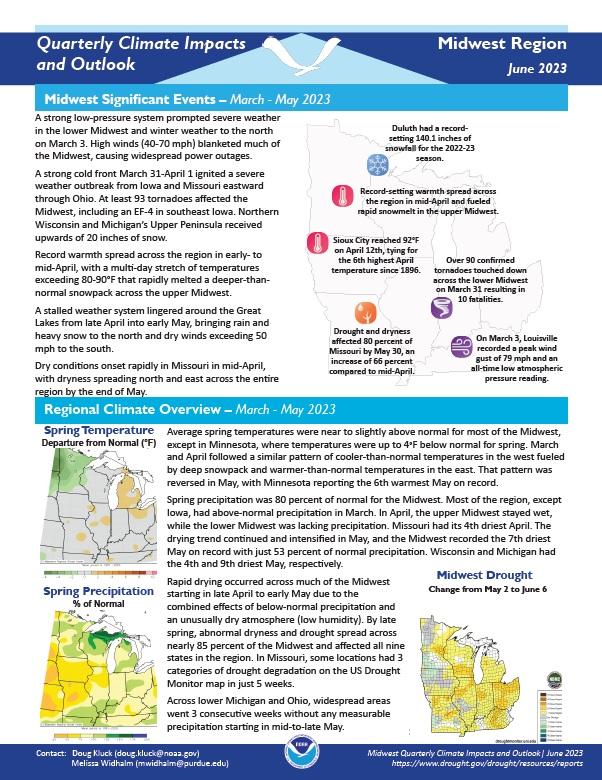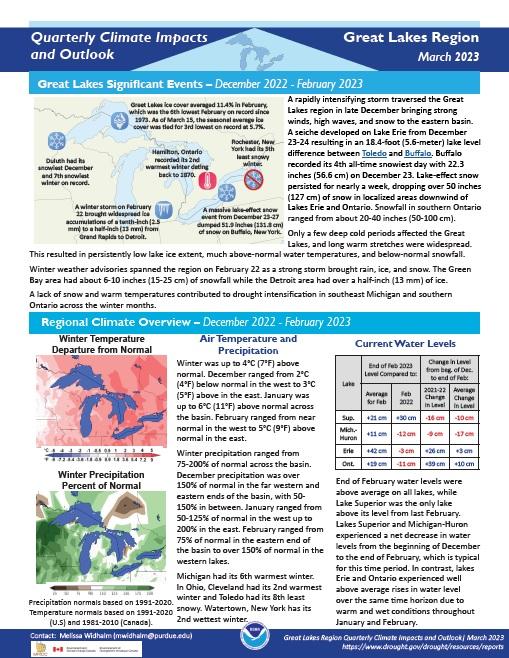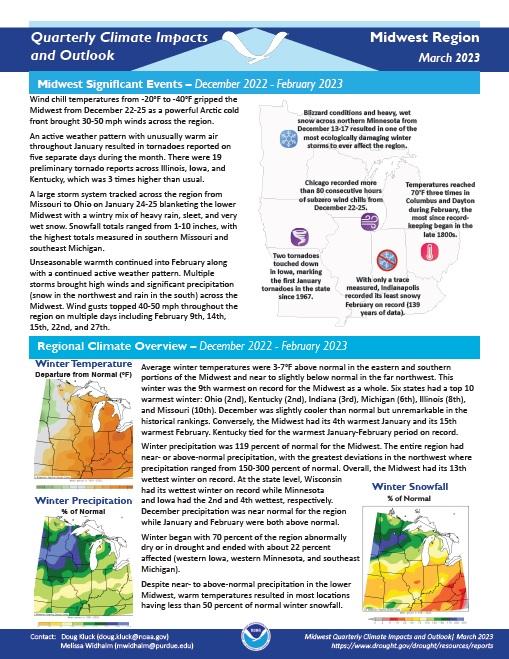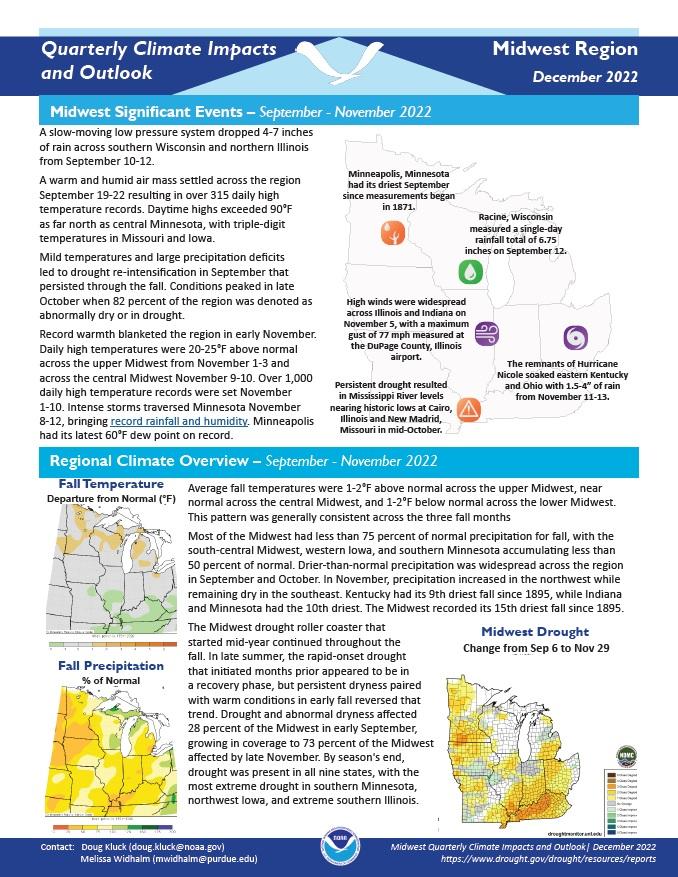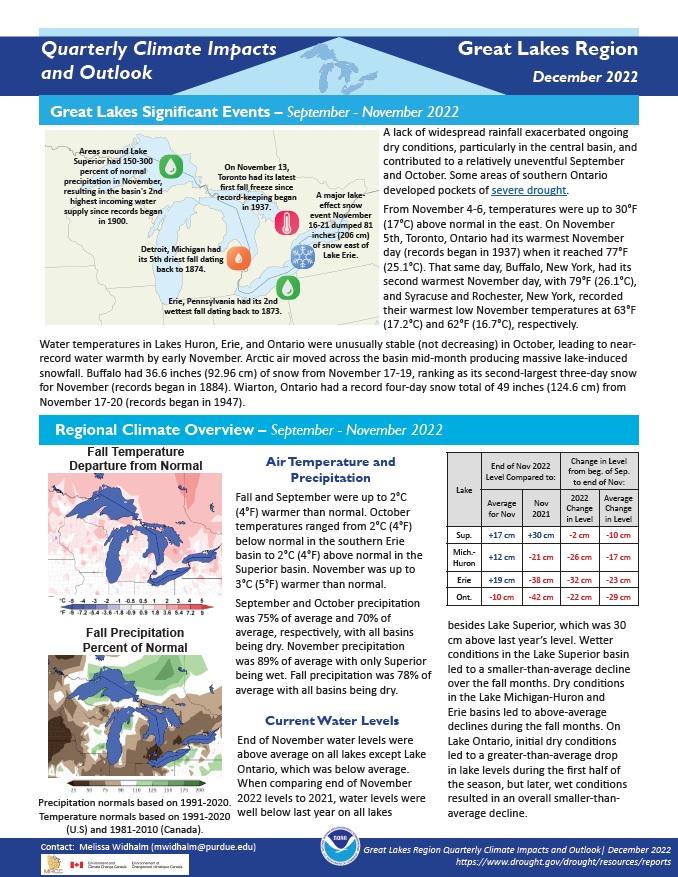For the latest forecasts and critical weather information, visit weather.gov.
Quarterly Climate Impacts and Outlook for the Great Lakes Region for March–May 2023. Dated June 2023.
Spring temperatures ranged from 2°C (4°F) below normal to 1°C (2°F) above normal. Spring precipitation was 90% of average, with the Erie basin being dry, Superior basin being wet, and the other basins near average.
Quarterly Climate Impacts and Outlook for the Midwest Region for March–May 2023. Dated June 2023.
Average spring temperatures were near to slightly above normal for most of the Midwest, except in Minnesota, where temperatures were up to 4°F below normal for spring. Spring precipitation was 80% of normal for the Midwest.
Quarterly Climate Impacts and Outlook for the Great Lakes Region for December 2022–February 2023. Dated March 2023.
Winter was up to 4°C (7°F) above normal. Winter precipitation ranged from 75%–200% of normal across the basin.
NOAA’s Regional Climate Services Program created these climate outlooks to inform the public about recent climate impacts within their respective regions. Each regional report contains easy-to-understand language, and anyone can access them through the Drought Portal.
Quarterly Climate Impacts and Outlook for the Midwest Region for December 2022–February 2023. Dated March 2023.
Quarterly Climate Impacts and Outlook for the Midwest Region for September–November 2022. Dated December 2022.
Average fall temperatures were 1–2°F above normal across the upper Midwest, near normal across the central Midwest, and 1–2°F below normal across the lower Midwest. Most of the Midwest had less than 75 percent of normal precipitation for fall, with the south-central Midwest, western Iowa, and southern Minnesota accumulating less than 50 percent of normal.
Quarterly Climate Impacts and Outlook for the Great Lakes Region for September–November 2022. Dated December 2022.
Fall and September were up to 2°C (4°F) warmer than normal. Fall precipitation was 78% of average, and all basins were dry.
NOAA’s Regional Climate Services Program created these climate outlooks to inform the public about recent climate impacts within their respective regions. Each regional report contains easy-to-understand language, and anyone can access them through the Drought Portal.
This handout provides information on the typical La Niña winter pattern; the La Niña outlook; potential winter and spring impacts; and comparisons of conditions during previous La Niña years for the Great Lakes region. Updated November 2022.
NOAA’s Regional Climate Services Program created these Outlooks to inform the public about climate impacts within their respective regions. Each regional report contains easy-to-understand language, and anyone can access them through the Drought Portal.


